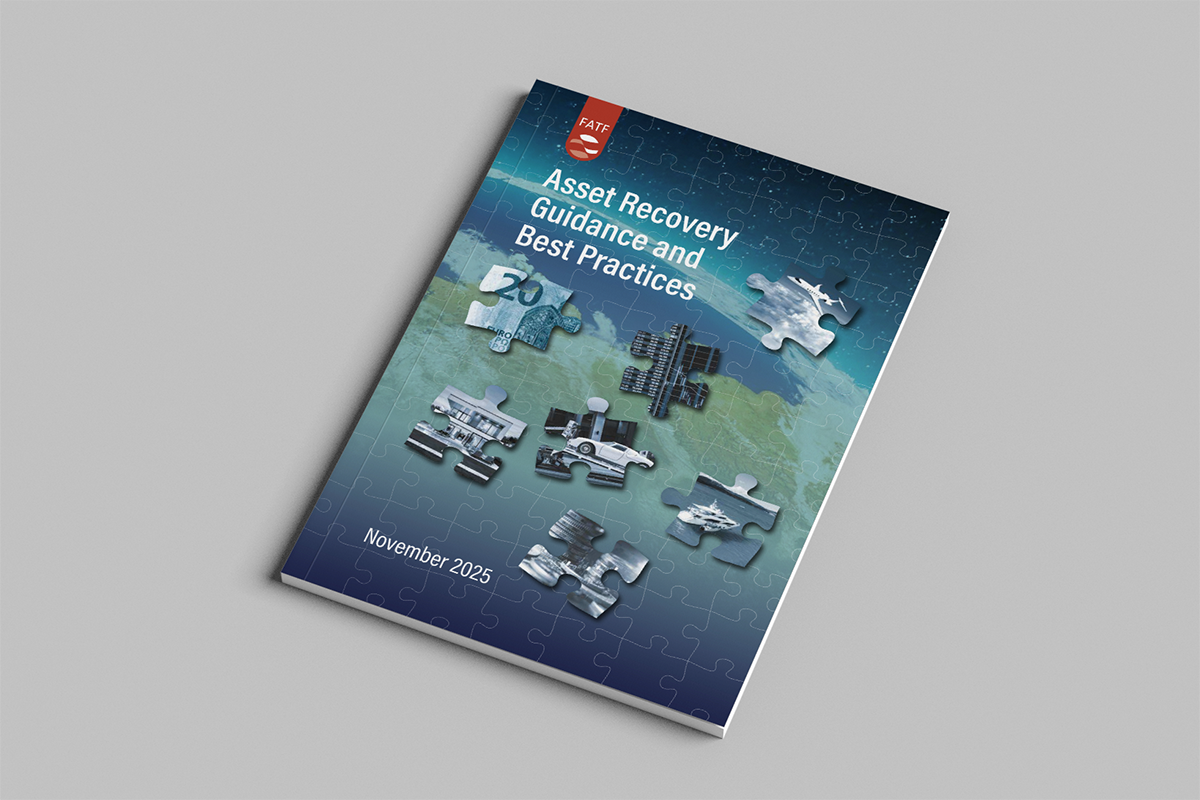The FATF’s asset recovery guidance reflects real-world challenges and solutions

The Financial Action Task Force (FATF) has published new Asset Recovery Guidance and Best Practices, offering a comprehensive roadmap to help countries get better at recovering illicit assets.
Through our International Centre for Asset Recovery (ICAR), the Basel Institute is proud to have contributed to this initiative, which will be instrumental in strengthening asset recovery across jurisdictions globally.
The Guidance reflects real challenges and operational lessons encountered by jurisdictions worldwide. It incorporates innovative legal tools and best practices that have proven effective in practice, including those supported through our collaborative policy, training and technical assistance work with our partners.
The Guidance in brief
The Asset Recovery Guidance aims to help countries implement the 2023 revisions to the FATF Recommendations, which emphasise the crucial role of asset recovery in combating money laundering and related financial crimes. It provides policymakers and practitioners with clear practical steps for developing for more effective, transparent and victim-centred asset recovery systems.
Drawing on the experience of 38 jurisdictions as well as 22 stakeholder organisations, including the Basel Institute, the Guidance brings together global best practices, operational lessons and legal innovations into a single reference document. Together, these set out how countries can more effectively trace, restrain, confiscate, manage and return criminal assets.
The Guidance also outlines the growing role of technology in asset recovery, including blockchain analytics and open-source intelligence, which are crucial to keep pace with crime in a digital economy. It highlights new international tools such as Interpol’s Silver Notice, which facilitates the tracing of criminal assets across borders.
Key recommendations
The Guidance recommends that states and their relevant agencies adopt a number of key policies and practices to improve asset recovery outcomes:
- Asset recovery as a priority: Adopt clear policies, allocate human and technical resources and provide training for agencies involved in the process. Establish inter-agency coordination and cooperation mechanisms, guidelines for the reuse of recovered funds, monitoring mechanisms and partnerships with the private sector or civil society.
- Systematic approach to financial investigations: Initiate asset tracing efforts from the outset of serious crime cases, ensuring inter-agency coordination.
- Focus on preventing asset dissipation: Share intelligence and take immediate actions to safeguard assets. This includes the use of temporary suspension or withholding of consent for suspicious transactions by financial intelligence units, as well as rapid freezing or seizing mechanisms by law enforcement agencies.
- Beyond criminal confiscation: Introduce non-conviction based confiscation and unexplained wealth measures to recover illicit proceeds even where prosecution of the perpetrators is not possible.
- Cooperation in cross-border cases: Improve and facilitate cooperation, including the use of both formal and informal cooperation mechanisms, joint investigation teams and networks, such as Asset Recovery Interagency Networks (ARINs) and the Egmont Group of Financial Intelligence Units.
- Asset management and allocation of recovered funds: Plan the management of confiscated assets to maximise the value of any assets that can be recovered and to ensure benefits for victims and communities.
- Fundamental rights: Make sure every step in the asset recovery process is proportional, in line with due process and subject to judicial oversight.
Role of civil society and the private sector
The guidance also underscores the vital roles of civil society and the private sector in asset recovery:
- Civil society actors, including investigative journalists, help uncover illicit activities and drive advocacy for reforms.
- The private sector, including financial institutions and so-called designated non-financial service providers (DNFBPs), provide critical financial intelligence as well as support to take immediate action in safeguarding assets.
Together with authorities, they collaborate to detect, trace and return criminal proceeds. This collective effort enhances recovery outcomes and strengthens public trust through increased transparency and accountability.
How our work in the field reflects the Guidance
With our 20+ government partners, our specialist ICAR teams prioritise many of the key areas highlighted in the Guidance.
Through training and technical assistance, we help authorities strengthen their capacity to investigate, trace and recover illicit assets, with tangible results – from advancing major transnational corruption and money laundering investigations throughout Africa, Europe, South America, and Asia and through assisting in the development of asset recovery legislation such as unexplained wealth and non-conviction based confiscation laws.
We are also heavily focused on ensuring that recovered criminal assets or proceeds of corruption are either returned to victims or reinvested for good, such as in sustainable development or anti-corruption projects or in criminal justice reforms.
Why does this matter?
Asset recovery continues to be one of the most challenging elements of the global fight against financial crime, with the effectiveness of recovering criminal proceeds still falling short. The FATF Guidance seeks to address this by raising global standards and ensuring greater consistency in their application.
The message is clear: recovering criminal assets is crucial to effective criminal justice and transparent financial systems. We support this approach and are committed to advancing it.
As the Director of ICAR, Iker Lekuona states:
“We are encouraged to see many of our policy priorities align with the approach outlined by the Guidance, which will strengthen the support we provide to our partner jurisdictions. ICAR will continue to assist countries through technical assistance, training and policy development, helping turn these priorities into tangible outcomes for communities.”




